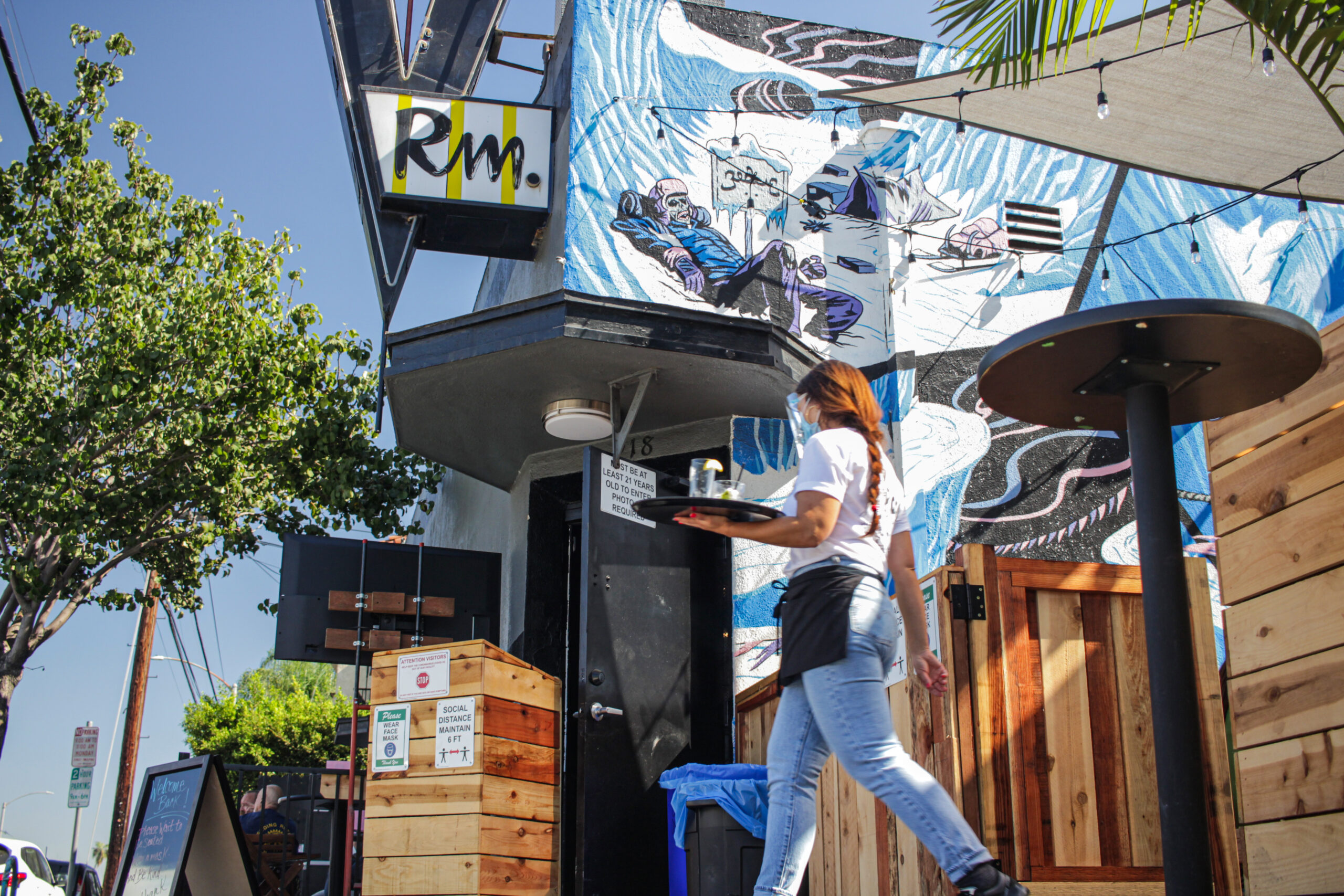Long Beach is officially loosening COVID-19 rules Thursday for bars, restaurants, gyms, swimming pools, offices and a handful of other locations.
The city’s health department can make the move now that the rate of coronavirus infections has subsided enough across Los Angeles County to qualify the region for the state’s “orange tier,” which is the second-least-restrictive set of rules in California’s county-by-county reopening plan.
Despite the progress being made, officials continued to urge caution and emphasized the need for masking and physical distancing.
“Please remember that the pandemic is not over and mask wearing is not solely to protect you, it is to protect others around you,” Mayor Robert Garcia said at a briefing Wednesday. So far, 910 Long Beach residents have died from the virus.
Long Beach is instituting the looser orange tier rules quicker than the rest of LA County, which plans to put them into effect Monday. The city felt comfortable doing this because the rate of community spread locally is so low, Long Beach Health Officer Dr. Anissa Davis said.
“It will be really important for all of us to take responsibility for the fact that we are opening maybe a couple of days before other jurisdictions,” she said, urging people to not let their guard down.
So what does the orange tier mean for Long Beach? Here’s what the Long Beach Health Department says is different starting at 12:01 a.m. Thursday, April 1.
- Bars: For the first time in nearly a year, bars that don’t serve meals can reopen on-site dining. They must be outdoors only, and customers can’t mingle. Drinks can only be served to people seated at tables, and they must keep their masks on any time other than when they’re physically drinking—or eating, in the case of bars that serve food. Any pool tables or other bar games are not allowed. LA County says it will only allow bars to operate between 10 a.m. and 11:30 p.m., but Long Beach officials did not say whether they would institute a similar rule. Long Beach’s rules for bars are available here.
- Wineries, Breweries and Distilleries without meal service may operate outdoors and indoors with an indoor capacity limit of 25% or 100 people, whichever is less.
- Restaurants: Along with bars or breweries that serve meals, restaurants can now have customers indoors up to 50% capacity or 200 people, whichever is fewer. They had been limited to 25% capacity or 100 people in the red tier. Other safety measures—like masking—are still in place, including a requirement that tables must be separated by at least 8 feet.
- Gyms and fitness centers may now operate indoors at 25% capacity. They were limited to 10% in the red tier. Climbing walls are also allowed to open.
- Offices, even “nonessential” ones, can now welcome workers back indoors with the proper safety precautions. Until now, telework had been required. It’s still strongly encouraged.
- Weddings and funerals: Food and beverage are now allowed to be served at weddings and funerals as long as people are seated at tables and not mingling while being served and eating. Self-service food and buffets are not allowed. Indoor capacity for these events is limited to 50% and, of course, physical distancing and masking is still required.
- Colleges and universities can now have indoor lectures and student gatherings limited to 50% capacity or 200 people, whichever is less. Distance-learning is still strongly encouraged.
- Retail: Capacity limits are lifted on all standalone retailers—indoors or outdoors. They were capped at 50% capacity in the red tier. Malls must keep their common areas closed, but food courts can reopen with the same restrictions as restaurants: (50% of capacity or 200 people). By contrast, LA County is only allowing up to 75% capacity at retail locations.
- Pools: Public or shared pools, as well as those at gyms and sports facilities, can open at 25% capacity indoors. All outdoor spas, hot tubs, splash pads and pools can stay open—as they already were under the red tier. Indoors, they must remain closed, Garcia said.
- Professional sports: Teams are allowed to have indoor training sessions and competitions, as long as there’s no live audience. To allow an audience, they must play or practice outdoors and enforce other safety restrictions. Non-professional and youth sports were already allowed, with restrictions.
- Live events: Indoor live events are still prohibited, but outdoors, they can resume starting April 1 with restrictions including 33% of maximum occupancy and limiting attendance to in-state visitors only. If all attendees show proof of a negative coronavirus test 72 hours prior to attendance, capacity can be increased to 67%.
- Religious services can operate at 50% indoor capacity. They were restricted to 25% in the red tier.
- Movie theaters, zoos and aquariums can operate at 50% indoor capacity. They were restricted to 25% in the red tier.
- Amusement and theme parks may resume indoor and outdoor operations, beginning April 1, with modifications, including total park occupancy of 25% for both indoor and outdoor operations, in addition to other State requirements.
All of Long Beach’s COVID-19 protocols are available on their coronavirus website.
Editor’s note: this story was updated with more information from the city’s health order.

